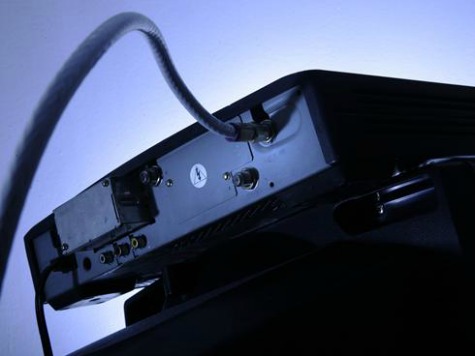Cable and satellite TV distributors (Pay-TV) have secretly declared war on local TV stations who broadcast television programming for free over the air (Free-TV). Pay-TV has chosen a free market flag as its standard and marched into battles over the obscure regulatory territories of “retransmission consent,” “broadcast exclusivity agreements,” “basic tier,” and “joint sales agreements.”
Each of these battles has been obscured by the same Pay-TV smoke screen — that it is fighting for a free market approach to video regulation. The resulting fog of war has obscured Pay-TV’s real mission: To kill Free-TV entirely and take its ad revenue.
Though it’s true that Pay- and Free-TV don’t operate in a truly free market, the regulatory changes proposed by the Pay-TV industry wouldn’t eliminate regulatory intervention in the video market. Pay-TV distributors are not objecting to regulations and government subsidies that benefit them. They object only to the rules that benefit others, and Free-TV is their prime target.
When TV stations announced their intent to use new digital technologies to compete in the market for Pay-TV services, Pay-TV distributors successfully lobbied Congress to stop it. Now that TV stations are no longer in a position to compete for subscribers, Pay-TV distributors are complaining that video regulations designed to ensure Free-TV can still earn a profit are unfairly subsidizing Free-TV. They don’t acknowledge that those rules were the foreseeable consequence of Pay-TV’s own crusade to protect themselves from the direct competitive threat TV stations once posed.
The fact that the American Cable Association (ACA) is leading the charge against Free-TV offers more evidence that Pay-TV’s free market campaign is a smoke screen intended to hide their true objective: The ACA has complained the loudest about Free TV’s implicit regulatory subsidies even though several of its board members are receiving millions of dollars each in direct monetary subsidies from the government’s universal service program every year.
But, if Pay-TV distributors aren’t actually opposed to protectionist regulations or government subsidies — at least when they benefit Pay-TV — why are they so intent on eliminating regulations that benefit Free-TV?
The answer is in the ad revenues. According to the most recent Federal Communications Commission (FCC) report, the Free-TV industry generated about $36 billion in advertising revenue in 2011, with TV stations generating more than $10 billion in local advertising alone. In comparison, cable operators generated about $4 billion in local ad revenue.
Pay-TV distributors want the $10 billion in local ad revenue earned by TV stations, and they need to kill Free-TV to take it.
Obscure provisions in the Copyright Act provide Pay-TV with a government-granted license to retransmit Free-TV programming at government-regulated prices. Pay-TV distributors once viewed this “compulsory copyright” license as a benefit — but it is a benefit with a catch. The compulsory license prohibits cable operators from inserting their own advertisements in the Free-TV programming they retransmit, which means they can’t sell ad spots for broadcast programming.
Another obscure provision in the Communications Act provides local TV stations with a separate right to prohibit the retransmission of their signals without their consent. When Pay-TV distributors negotiate with a television station for consent to retransmit the station’s programming signal (known as “retransmission consent”), there is usually no opportunity to negotiate for an advertising time, because TV stations typically split their advertising time with the broadcast networks that provide programming.
These provisions in the Copyright and Communications Act, as well as the private contracts between TV stations and television broadcasting networks, prevent Pay-TV distributors from selling advertising for broadcast network programming. If Pay TV distributors could instead obtain programming from broadcast networks directly, Pay TV distributors — not TV stations — would be able to sell the local advertising spots for such programming. But the only way to do that is to eliminate TV stations, which is what the war on Free-TV is ultimately designed to accomplish.
That’s why Pay-TV distributors made the “retransmission consent” rules their first battleground. Retransmission consent revenues are often passed through to the TV station’s affiliated programming network. If the rules are changed in a way that artificially limits retransmission consent prices, broadcast programming networks would have an incentive to replace the lost revenue by converting into cable programming networks and dealing with Pay-TV providers directly.
If that happened, Pay-TV providers would be able to sell advertising spots for network programming themselves, which would increase their revenue opportunities. That would be great for Pay-TV distributors and no so great for Free-TV. Most TV stations rely on broadcast network programming and the advertising revenue it generates to survive. Without either, it is unlikely that Free-TV would remain a viable business.
It is important that policymakers and the public understand Pay-TV’s real mission before taking sides. If we are going to kill Free-TV, we should expressly declare it an enemy first, not allow it to become the unintended victim of “friendly fire.”

COMMENTS
Please let us know if you're having issues with commenting.